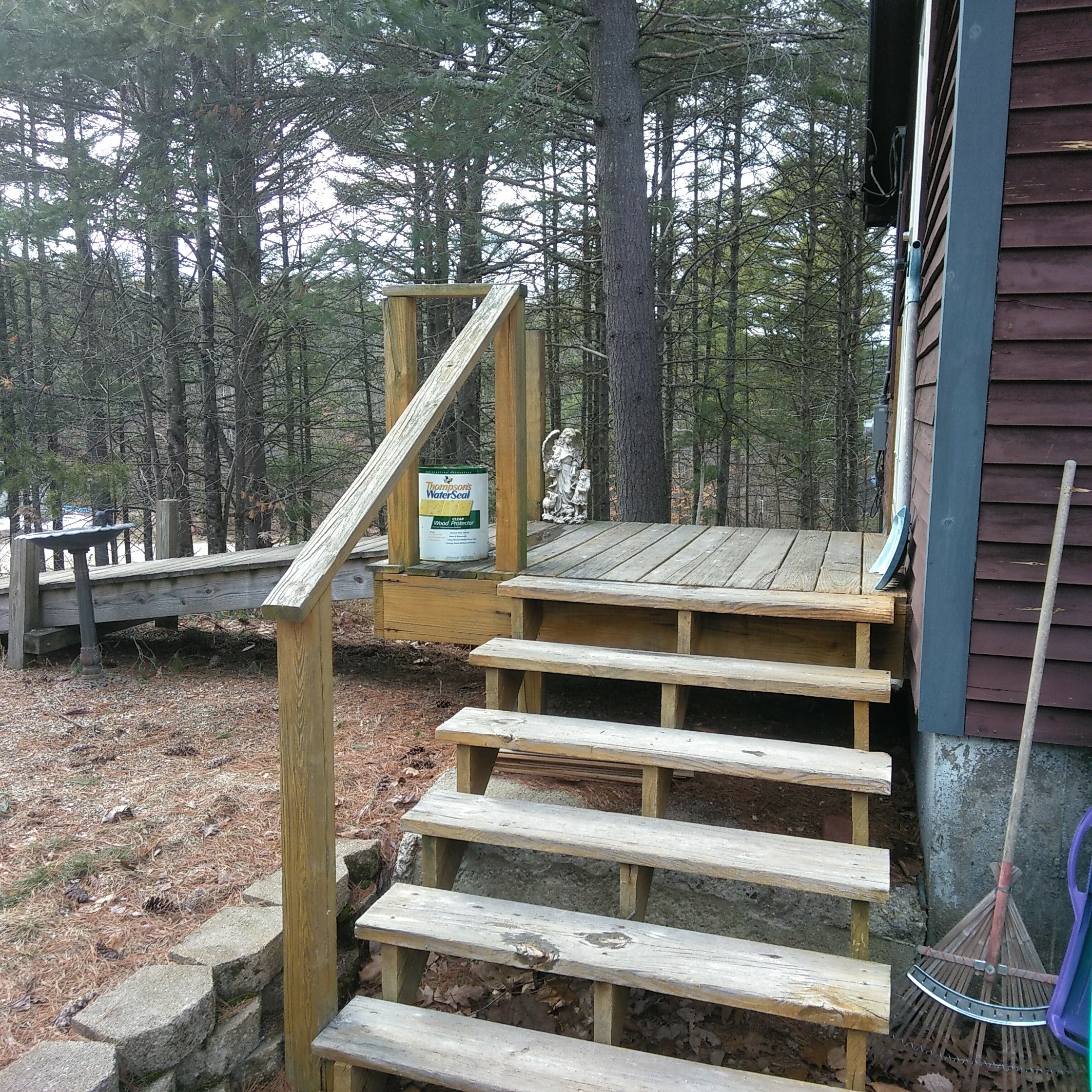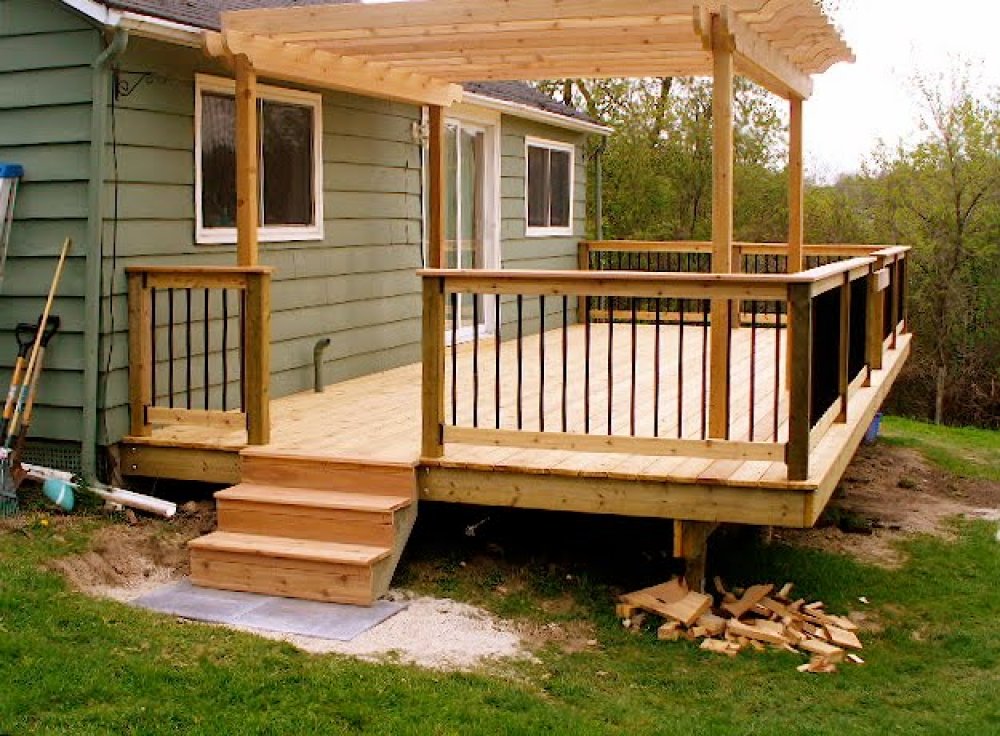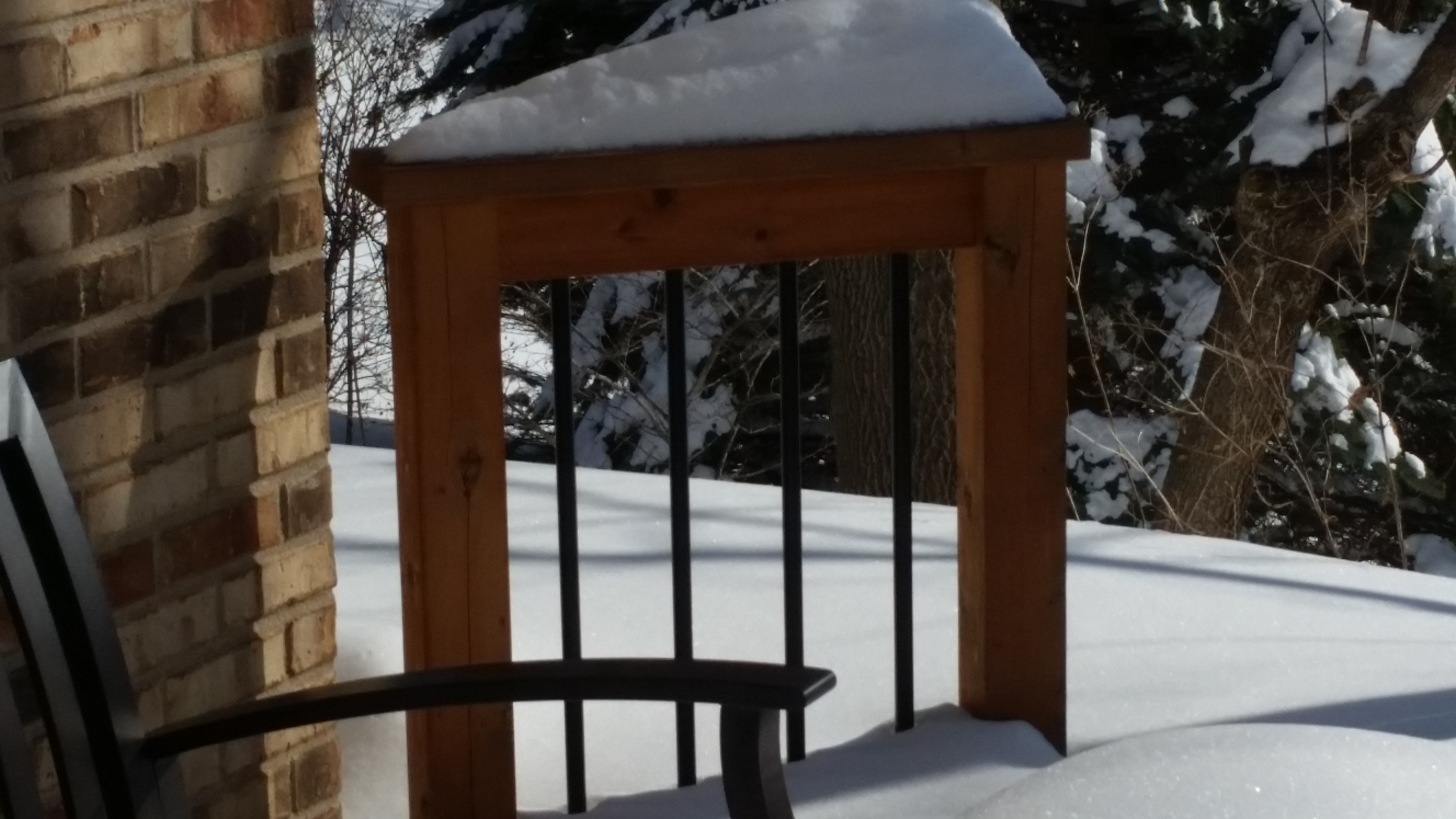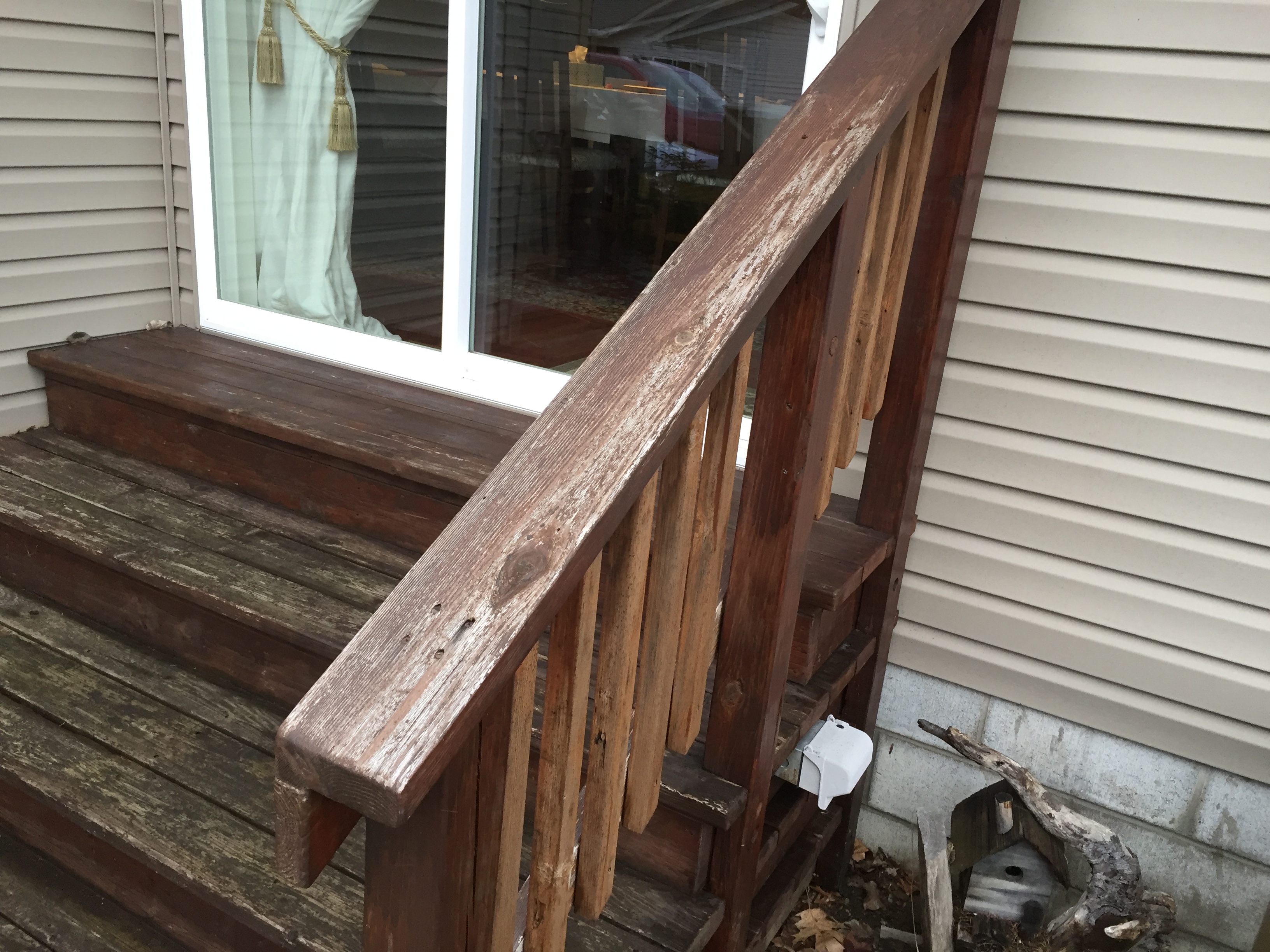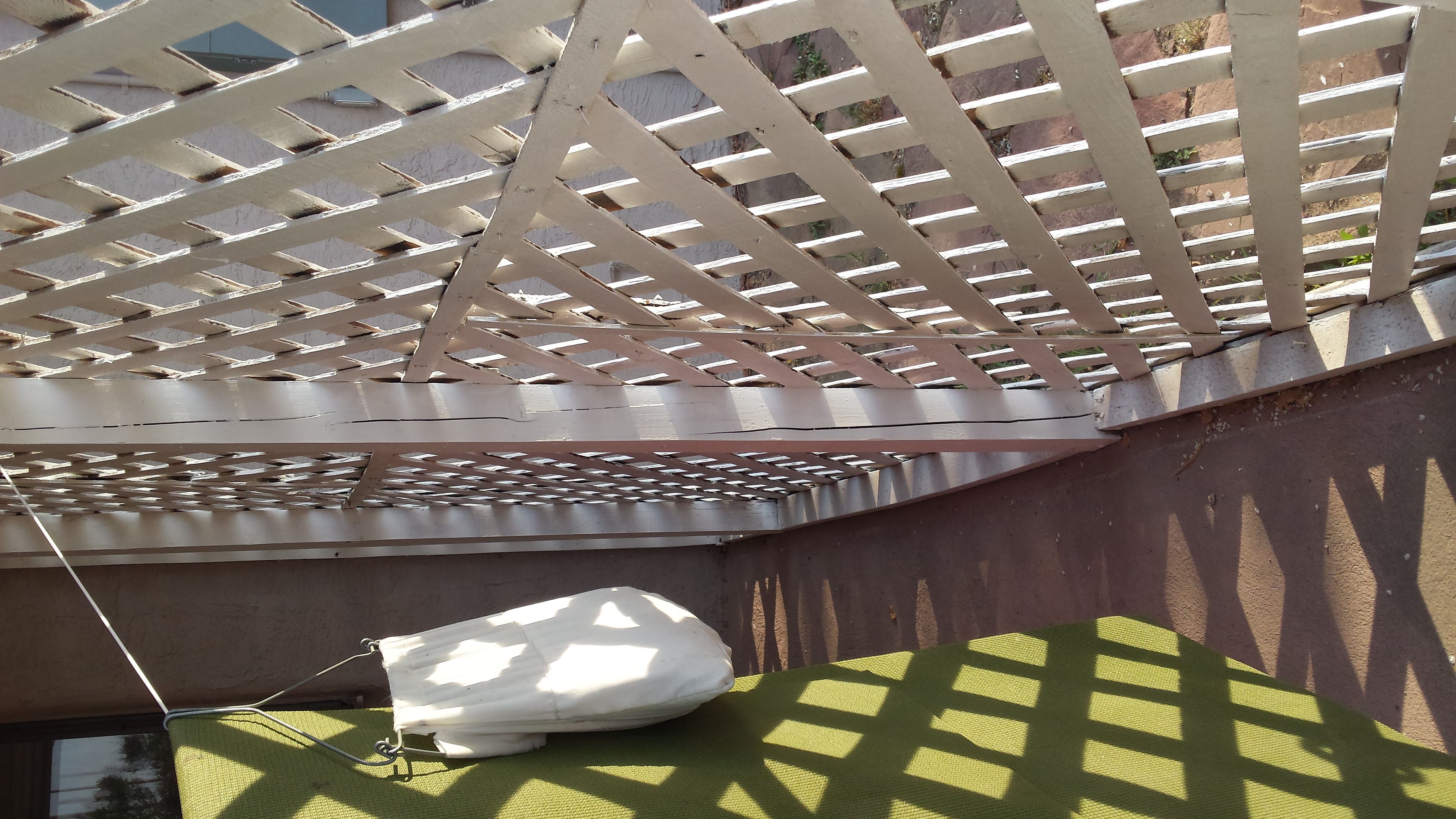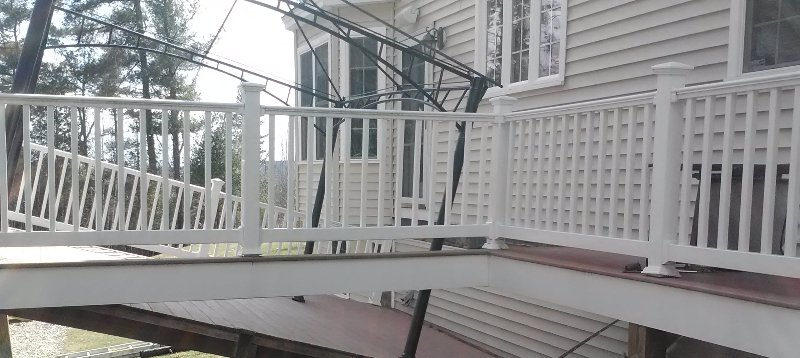I read about the required deck receptacles.
There are two Requirements for Locations of Outdoor Receptacles:As of 2005, the NEC required at least one outdoor receptacle in the front and in the rear of the house, not more than 6 feet from the ground.In 2008, the NEC added the following requirement: Balconies, decks and porches that are accessible from inside the dwelling unit shall have at least one receptacle outlet installed within the perimeter of the balcony, deck or porch. The receptacle shall not be located more than 6 feet above the balcony, deck or porch surface.
This photo displays a ledger board for a deck being installed to brick or veneer. This may pose a potential structural failure at the connection of the ledger board to the brick should the brick crack either from drilling for fastener installation or over a period of time due to loads exerted in the area. Fasteners of of the ledger board should be staggered and spaced according to the general rule of thumb stating that “on-center spacing = 100/joist length”.
The photo also shows plated (zinc) washers being properly used for all fasteners and that the deck joists are properly seated in the hanger brackets.

Patio Pier (post connections) should rest on solid concrete foundations or piles and be fastened to the concrete for stability. Pressure treated lumber will deter the effects of wood decay due to moisture but should preferably remain above grade in order to avoid contact with pooling water. Inspectors should look for decay of wood at post bases and may use the “pick test” by which a sharp pointed tool such as a screwdriver is used to penetrate the surface of the wood and be leveraged to pry up the material parallel to the grain. This method can help determine wood decay if the material breaks up evenly over the tool with very little to no sound.
I read the article on Inspecting a deck. It is important to keep sprinklers, down spouts and run off away from any posts that in contact with the ground. also any indention’s that may have occurred from from the footing holes should be filled. Any moister or water that comes in constant contact with wood post. Even if they are treated will contribute to the decay of the post.
Here is a photo of a pressure treated deck that has a railing with no balusters.The stair risers are open There are no joist hangers & the ramp has no railings. All of these are safety concerns. A ramp 5’ or longer should have a railing installed . The riser opening shouldn’t let a 4 inch sphere to pass through and balusters should be installed on railings.& joist hanger need to be installed.
Newer constructed deck, it has proper flashing at ledger. It has proper spacing for decking, balusters, steps. I would make sure that steps get the appropriate lighting. Guardrails and end post are all with in the local specs and mounting.
I checked this railing for 4" sphere not passing between balusters. The railing height is 37.5 inches. The deck was free standing not attached to the house which is good because there was brick faade. The decking had sufficient 1/8" spacing for drainage.
A deck failure is any failure of a deck that could lead to injury, including rail failure, or total deck collapse. More than 2 million decks are built and/or replaced each year in North America. InterNACHI estimates that of the 45 million existing decks, only 40% are completely safe
AFCI stand for arc fault circuit interupters
AFCI testers or indicators are portable devices to test AFCI functionality,
They send waveform patterns causing the AFCI to trip.(opening the circuit) AFCI indicators help ensure that AFCIs are monitoring the circuits for dangerous arc faults
I read the article on deck receptacles’. Many houses were built before the new NEC code so are grandfathered in. It is still a good idea to have an outdoor receptacle in the rear of house that serves both purposes.
This picture is pointing out that this 4 step railing does not have a graspable handrail as it was constructed of a 2 x 6 on the flat. it is too wide to be able to securely grab and hold it while using the steps. There is an opportunity to add a proper handrail to include a return to the newel post and securely mount the handrail to support users weight.
After taking the “How to Perform Deck Inspection” and reading the “Deck Inspections Illustrated” article I will never assume that a deck that I am standing on is safe. I think and from what I have seen, most decks constructed have been poorly planned and executed and even pose risks when brand new let alone many years old. Deck builders and carpenters who build decks should pay closer attention to the construction and implementation of safety standards to better protect those that use the deck and the structural integrity of the building when attaching the deck to the building to prevent damage to the rim joist when not properly flashed.
Shown here is large and excessive cracking in a wooden post. This condition can happen to older wood or wood that’s excessively exposed to moisture. This post’s excessive cracking is a structural and safety issue that needs to be addressed.
Decks larger than 20 square feet that are accessible from inside a dwelling shall have an outside electric receptacle. This is for the reason of safety because having one discourages the use of extension cords. The use of extension cords has been a documented safety hazard for several reasons. They can cause tripping, shorting, electrocution, and fires. It should be a covered GFCI-protected receptacle and installed so as to keep moisture away from it and regardless of whether there’s a roof overhead.
Wood destroying insects are not to blame for wood decay,but they are in fact attracted to wood that is softened by decay.Fungi spores feed on cellulose and lignin in which cell walls of wood is made of.These fungi can lay dormant until conditions [moister and temperature] are right.
This essay is about a deck built with No lag bolts. Every deck made of wood will eventually fail and need to be replaced, but proper construction and maintenance will make them last longer and provide more safe enjoyment. Wooden decks have an average life expectancy of 10-20 years depending on climate and level of maintenance.

This assignment is about Balconies, decks and porches that are accessible from inside the dwelling unit shall have at least one GFI receptacle outlet installed within the perimeter of the balcony, deck or porch.The Consumer Product Safety Commission (CPSC) estimates that extension cords cause 3,300 electrical fires every year in the United States.
Its important to note that hot tubs filled with water and people are heavy and can weigh a couple of tons. Most decks are designed for loads of 40 to 60 pounds per square foot. Hot tubs require framing that can support over 100 pounds per square foot.
The inspector should first try the pick test in an area where the wood is known to be sound to deterimine a “control” for the rest of the inspection. Decayed wood will break directly over the tool with very few splinters, and less or almost no audible noise compared to sound wood. Although deck inspections are visual-only inspections, inspectors may want to dig down around posts and perform pick tests just below grade level to look for decay.

In the attached image the deck can clearly be seen failing by means of a collapse near the house. The reason for this collapse is that the vertical support underneath the deck was spaced too far away from the attachment. Another support should have been used closer towards the house in order to prevent this safety issue.
